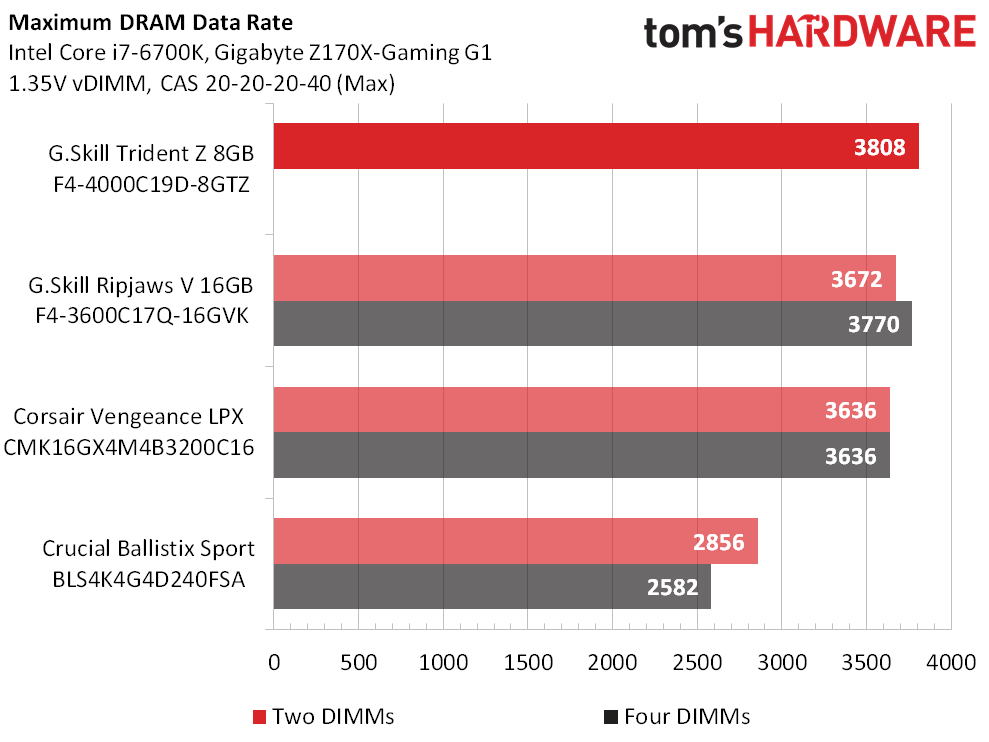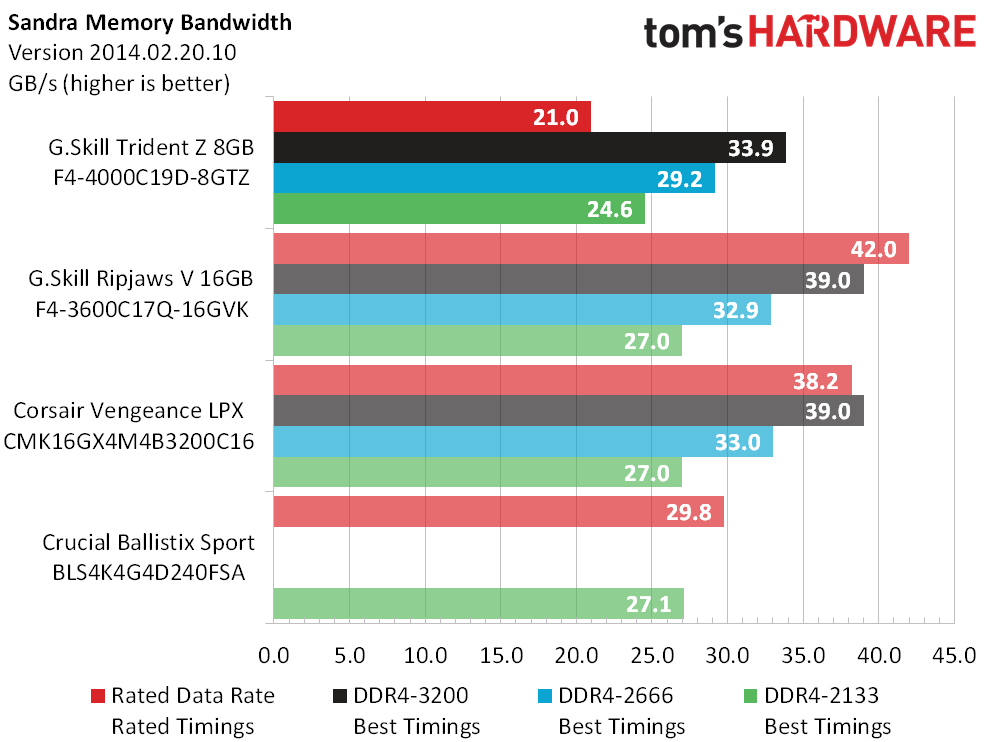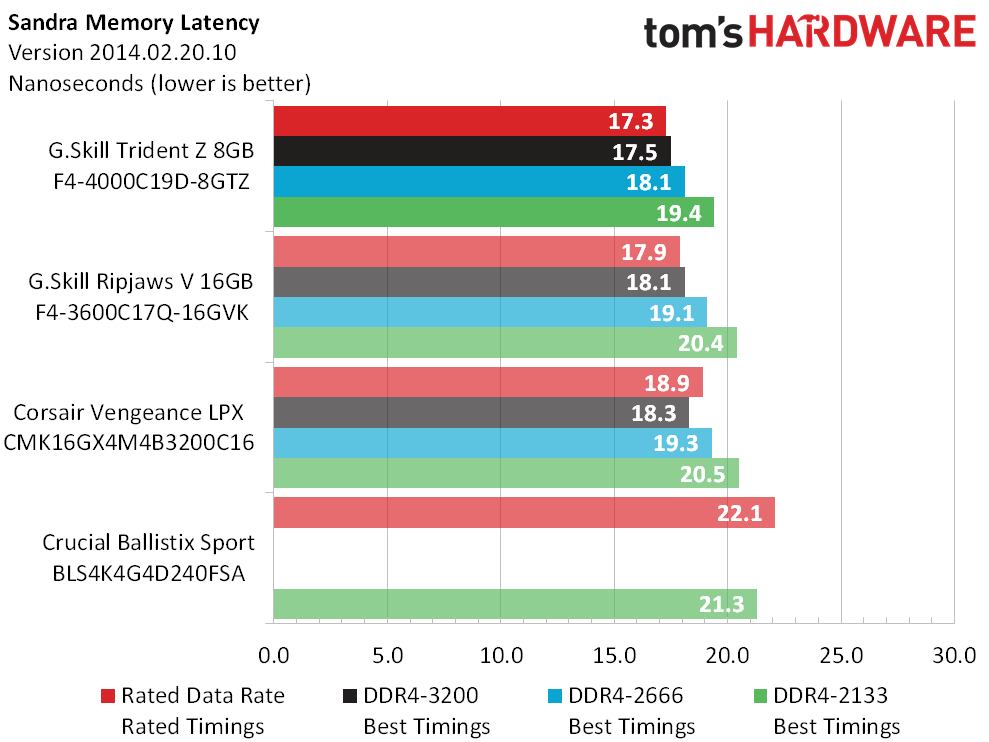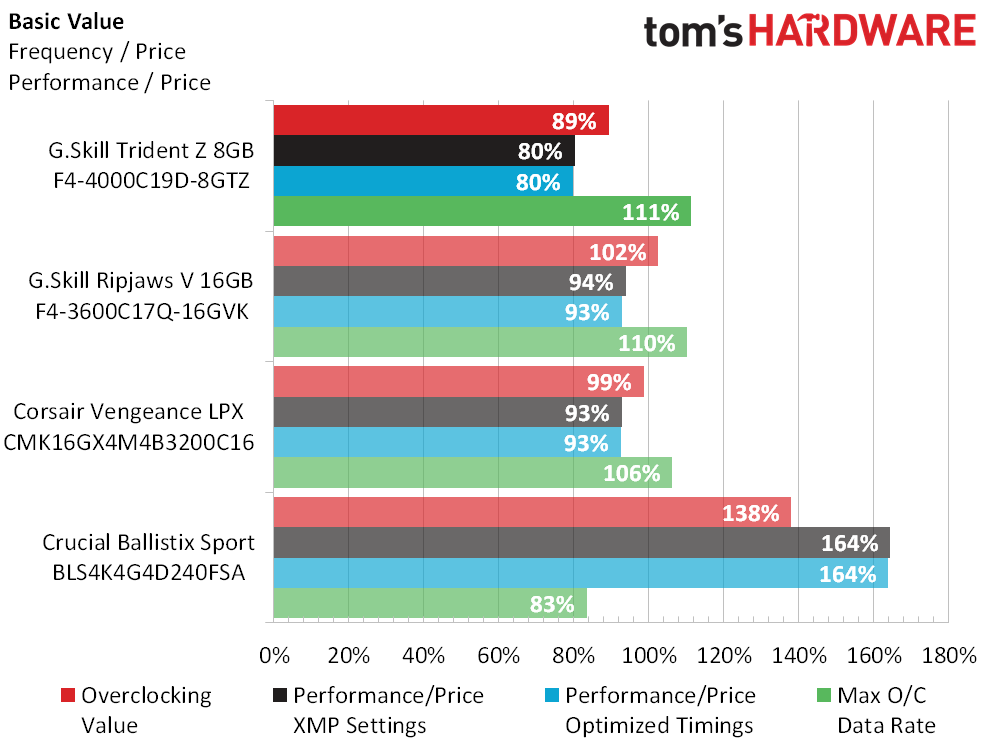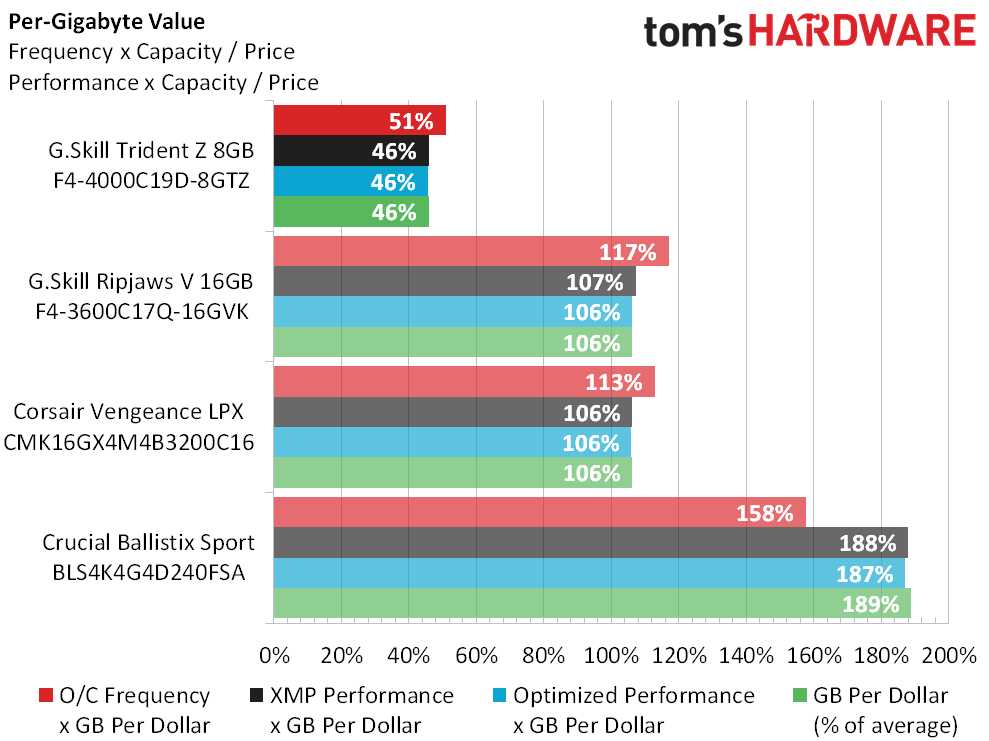G.Skill Trident Z DDR4-4000 Review
Skylake's advanced memory controller makes overclocking easier, but are memory modules keeping up? We put G.Skill's DDR4-4000 through its paces.
Why you can trust Tom's Hardware
Overclocking, Optimization And Performance
Starting with the basic concept that CAS 20 at 4000 MT/s is no worse than CAS 2 at 400 MT/s, I selected this as my maximum acceptable timing for overclocking up to DDR4-4000. I switched at the last minute from ASRock's Z170 OC Formula to Gigabyte's Z170X-Gaming G1 after finding that Gigabyte's board was able to produce superior 4-DIMM overclocks (and identical 2-DIMM overclocks when using G.Skill's own DDR4-3600).
Perhaps the Trident Z's rated 21-cycle tRCD or 41-cycle tRAS was needed to reach DDR4-4000? It barely edged out G.Skill's DDR4-3600 at the same settings.
Note the unexpected increase in overclocking ability for the 4-DIMM test of DDR4-3600. That's likely due to the motherboard responding to the presence of added DIMMs by automatically setting slightly looser tertiary timings.
Moreover, Corsair's DDR4-3200, which couldn't be overclocked at all on our X99 machine, climbed to an amazing DDR4-3636 on this Z170/Skylake configuration.
| Lowest Stable Timings at 1.35V (Max) on Gigabyte Z170X-Gaming G1 (BIOS F5i) | |||
|---|---|---|---|
| Row 0 - Cell 0 | DDR4-3200 | DDR4-2666 | DDR4-2133 |
| G.Skill Trident Z 8GB F4-4000C19D-8GTZ | 15-15-15-30 (1T) | 13-13-13-28 (1T) | 10-11-11-28 (1T) |
| G.Skill Ripjaws V 16GB F4-3600C17Q-16GVK | 15-16-16-32 (1T) | 13-14-14-28 (1T) | 11-11-11-28 (1T) |
| Corsair Vengeance LPX CMK16GX4M4B3200C16 | 16-16-16-32 (1T) | 14-14-14-28 (1T) | 11-11-11-28 (1T) |
| Crucial Ballistix Sport BLS4K4G4D240FSA | Not Capable | Not Capable | 12-12-12-28 (1T) |
Predicting that most of the Skylake-optimized memory we'd test in the future would be DDR4-3200 capable, I began testing each memory set to see how tight I could get timings at that speed. DDR4-2133 sets the baseline, so it's also included, and DDR4-2666 is included because it's the middle setting. Gigabyte's Z170X-Gaming G1 doesn't appear to work well with tRAS lower than 28 cycles, but G.Skill's new modules were able to reach slightly better CAS and tRCD latencies compared to competitors.
Anyone who has followed our Z170 motherboard review series probably remembers that it took a couple of months before we found a firmware to support the DDR4-3600 kit's rated settings. Similarly, the DDR4-4000 in today's test isn't perfectly stable at rated settings on Gigabyte's current Z170X-Gaming G1 firmware. We can't say with certainty that this memory will ever be stable at its rated speed, but our prior DDR4-3600 experience helps us look forward optimistically.
The slight instability shows up as a dip in Trident Z performance at DDR4-4000, but what about its pack-following DDR4-3200, 2666, and 2133 performance? Even though Skylake runs in dual-channel mode regardless of whether four or two modules are installed, its memory controller appears to function better with four modules.
Get Tom's Hardware's best news and in-depth reviews, straight to your inbox.
Two modules also appear to have less latency than four, as the Trident Z DDR4-4000's advantage in Sandra appears to exceed the difference in set latency. Then again, automatic firmware adjustments that add stability to a second pair of modules are likely impacting the latency measurements of the other kits.
Grid 2 is one of the few benchmarks able to take full advantage of reduced memory latency, but only when graphics limits aren't a factor. The problem in previous reviews has been that those lower test settings produced 200+ FPS results that don't mean anything in real-world game play. In search of data that would matter, I decided to see if the extra memory performance could also boost the GPU by using a slightly GPU-restricted setting.
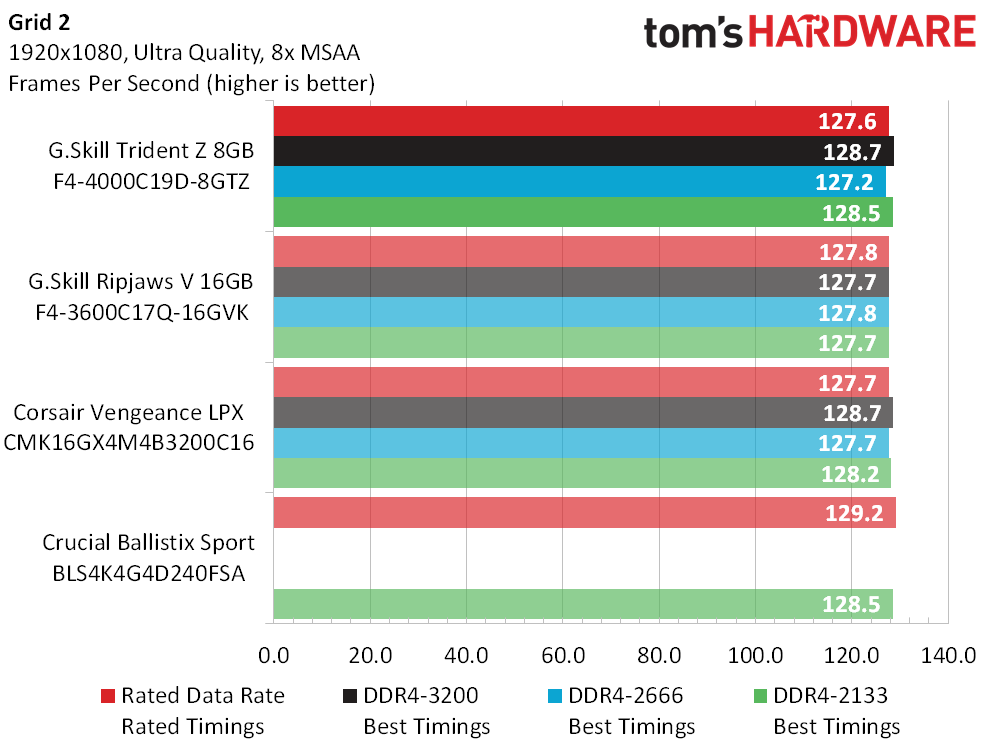
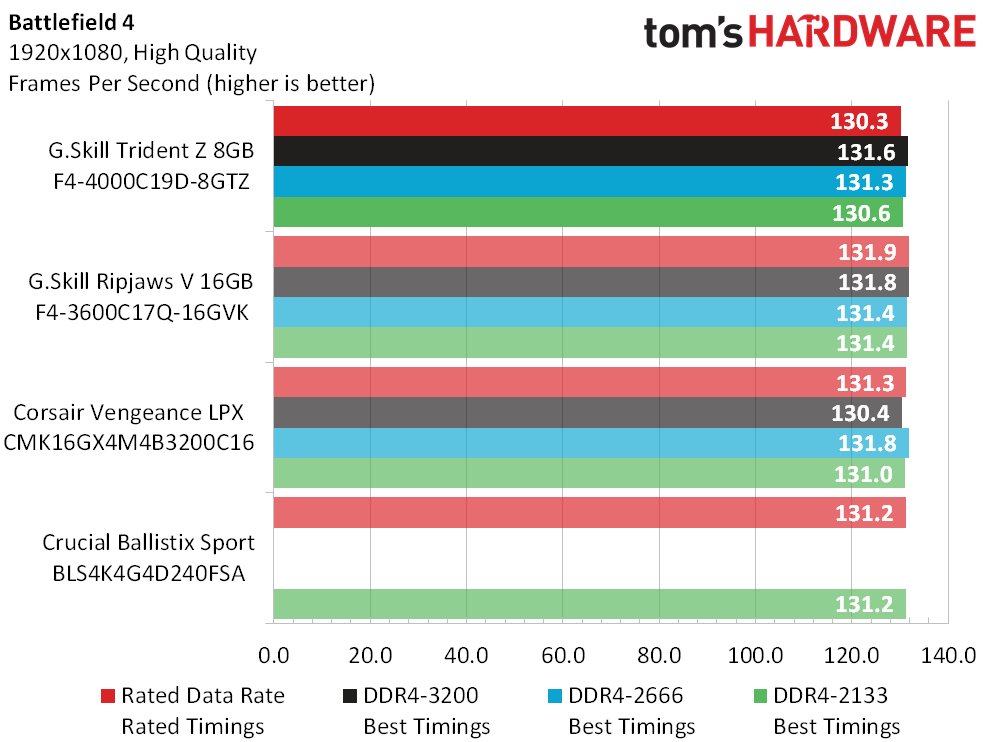
As with Battlefield 4, differences between various memory kits in Grid 2 are too small to mean anything whenever the GPU is even moderately stressed.
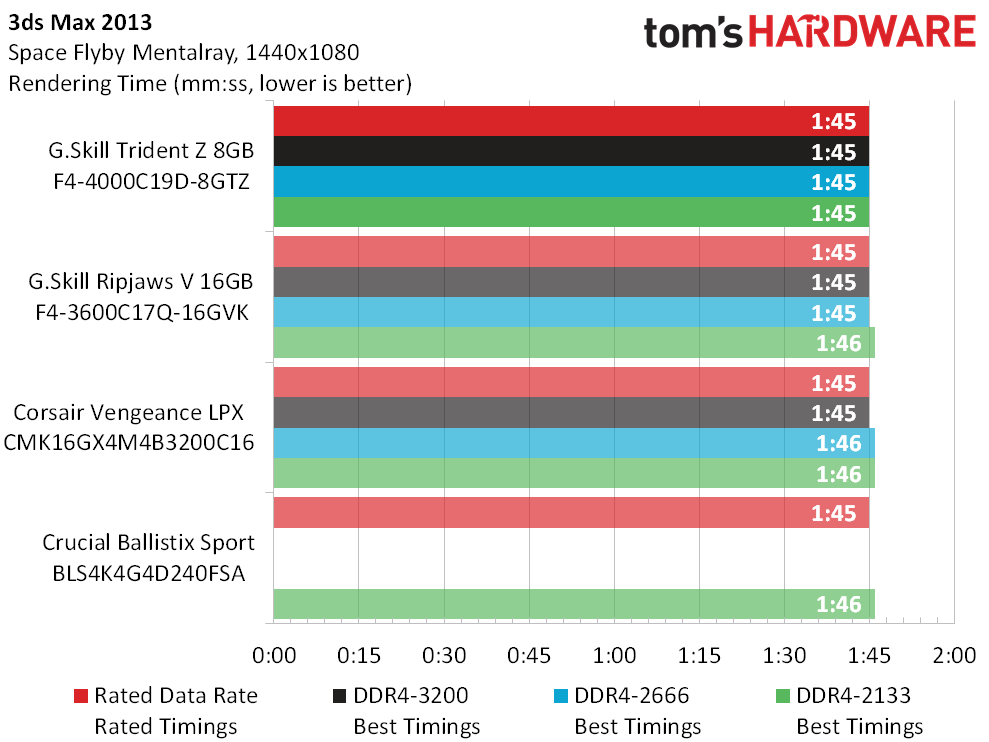
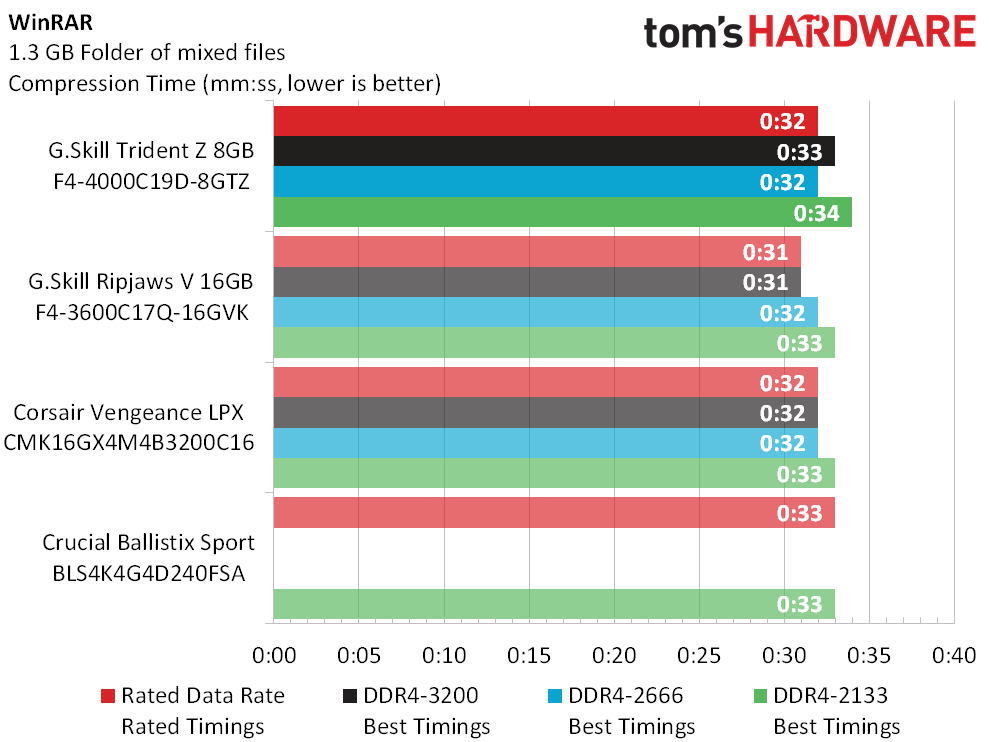
At data rates from DDR4-2133 to DDR4-4000, the best difference we can find is less than one second in a timed test.
A basic performance-per-price chart makes the Trident Z 8GB kit appear a better value than Ripjaws V 16GB, but that's partly because buyers are only paying for half as much RAM.
A more-realistic value perspective is weighted by value per gigabyte. Crucial's Ballistix Sport pulls far ahead due to its extra-low price, while Corsair's Vengeance LPX looks like a better-value high-end kit in spite of the extra cost of its fans.
MORE: Best MemoryMORE: All Memory Articles
MORE: Memory in the Forums
Thomas Soderstrom is a Senior Staff Editor at Tom's Hardware, covering Cases, Cooling, Memory and Motherboards. Follow him onTwitter.
Follow Tom's Hardware on Twitter, Facebook and Google+.
-
ipwn3r456 This RAM is faster than our CPUs (or atleast more than 90% of us, expect the overclockers)...Reply -
Aspiring techie ReplyThis RAM is faster than our CPUs (or atleast more than 90% of us, expect the overclockers)...
RAM clock speeds are 1/2 the rated data rates. So, DDR4 4000 runs at 2GHz, still pretty good.
If programs could use that extra bandwidth..... -
Crashman Reply
G.Skill has some great DDR4-3400 at 2x 8GB for the same price.17446297 said:That this RAM really isn't worth the money is made clear by the article.
-
heroictofu I'd like to see an article like this actually suggest programs/games/etc that could truly take advantage of higher memory bandwidth. They might be edge cases, but who knows, maybe there's some random game we've always enjoyed and never knew that RAM speed could make said game so much better. Or some application. Either way.Reply -
chaosmassive price aside, just how high this DDR4 memory will go?Reply
over last 6 months, too many products of DDR4 has released to racing for top speed. -
cats_Paw WE have been getting imperceptible improvements a few years now... We are still on 4 cores, even 2 in CPUs.Reply
So... if game devs and hardware manufacturares dont want to improve, they wont get my cash :D. -
McWhiskey ReplyWE have been getting imperceptible improvements a few years now... We are still on 4 cores, even 2 in CPUs.
So... if game devs and hardware manufacturares dont want to improve, they wont get my cash :D.
Fully agreed. I finally took the plunge and bought a new system this Christmas. Tired q6600 ==> skylake i7 , 5770 crosfire ==> 980ti. ALL of my day to day activities take the same amount of time. I am in no way wowed by any of the general computing activities. Games went from high/ultra settings to full ultra. Now I'm adding sweetfx to games and trying to find something to really show off a return on my investment.
I'm happy to have some bragging rights and no reason to ask "but can I run it?" But largely I feel like I could have waited a bit longer.
